Sacred Sites of Australia: Discover the Dreamtime Stories and Landscapes
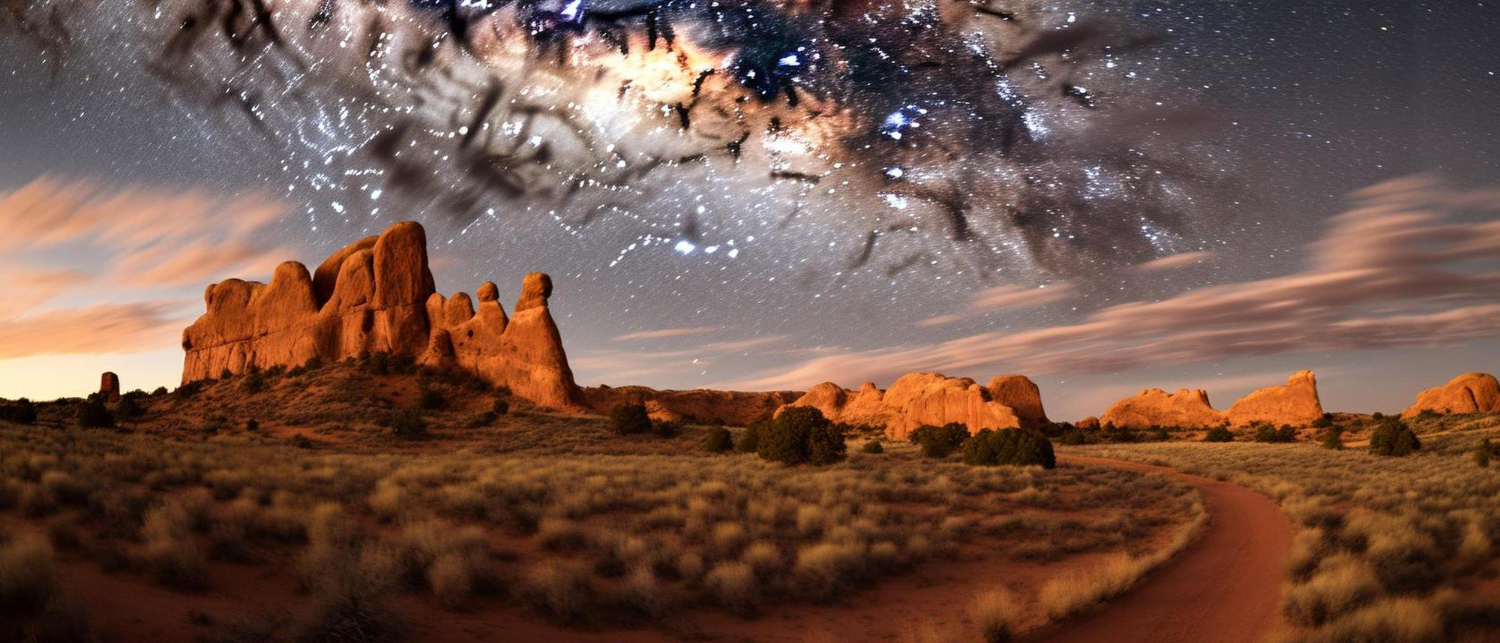
Updated On: April 01, 2024 by Fatma Mohamed
Australia’s tapestry is interwoven with the rich spiritual and cultural traditions of its Indigenous peoples. Central to their belief system is Dreamtime, a term describing both the time of creation and the reality of the present, capturing the essence of the Aboriginal spiritual connection to the land. The stories from Dreamtime bring life to the landscape, turning mountains, rivers, and deserts into sacred sites that are not only geographically significant but are also deeply infused with cultural meaning.
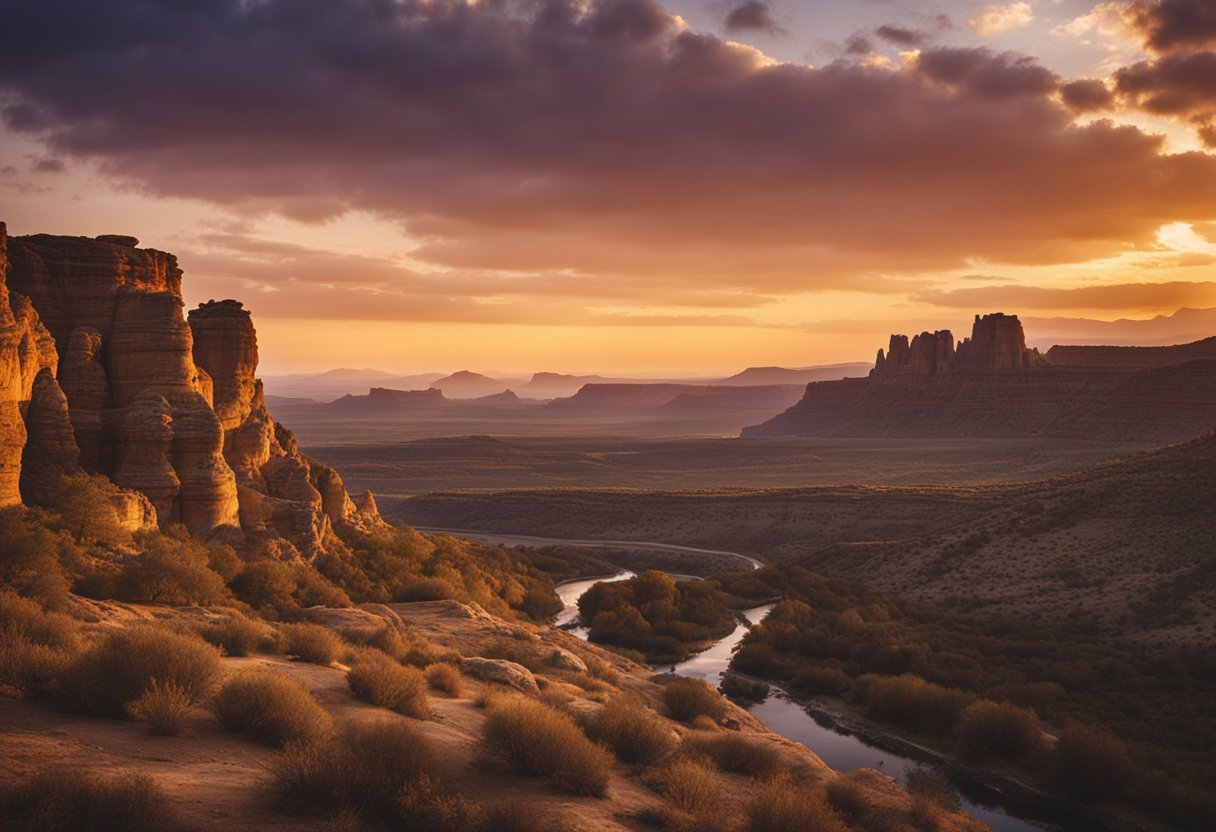
In the heart of this ancient tradition lie the sacred Aboriginal sites, geographical features instilled with spiritual significance, which serve as tangible links between the natural world and the heritage of Indigenous Australians. These places, which range from rock formations to waterholes, hold the echoes of ancestral spirits and are often the focal points of ceremonial practices and cultural expressions. The act of protecting these sites goes hand-in-hand with preserving the rich tapestry of Aboriginal culture.
Table of Contents
The Essence of Dreamtime
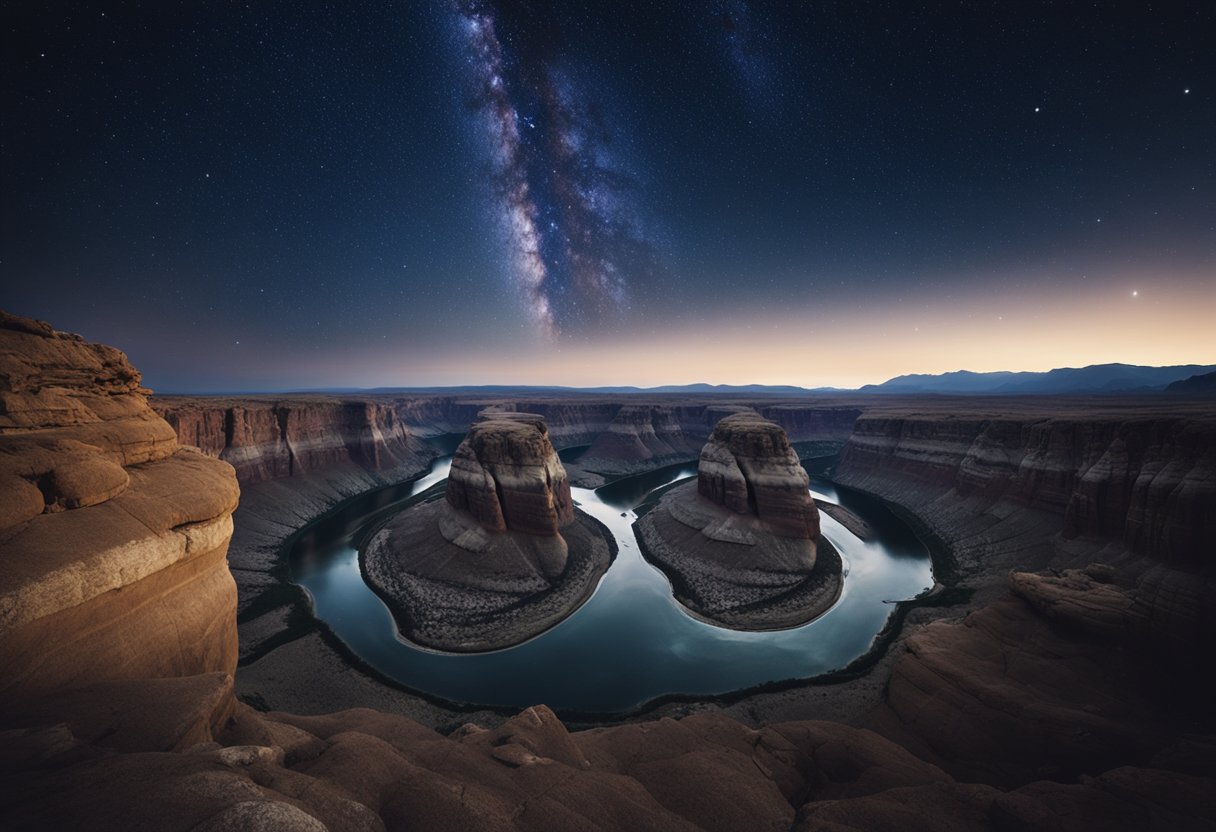
In exploring the spiritual and cultural fabric of Indigenous Australian communities, we find that Dreamtime stands at the very heart of their ethos.
Concepts and Beliefs in Dreamtime
Dreamtime, or The Dreaming, is a complex network of knowledge, faith, and practices that emanate from the diverse creation stories of the Aboriginal people. It encompasses the totality of the world’s creation and everything within it, laying the foundations for law, culture, and spirituality. Central to this are the ancestors, primordial beings who roamed the formless Earth, creating life and features of the landscape through their actions.
- Ancestors: The architects of life who continue to reside in sacred sites, waterways, and landscapes.
- Tjukurrpa: Another term for Dreamtime, particularly among Western Desert communities.
- Creation: Dreamtime explains the origins of the universe, landforms, and species.
Major Dreamtime Stories and Their Meanings
Dreamtime stories function as both educational and moral tools, with each narrative holding profound meanings and societal lessons.
- Rainbow Serpent: In many tales, this important creation figure carves the land, crafting rivers, valleys, and mountains, signifying the interconnectedness of life and the environment.
- Baiame: Often regarded as the ‘Sky Father’ or ‘Creator God‘, his narratives are laden with themes of morality and social responsibility.
These stories are not fictitious tales but are believed to be accurate accounts of the past, deeply woven into the fabric of the present and future. They guide everything from ecological understanding to social behaviour, cementing the deep connection between the people, their ancestors, and the land.
Aboriginal Spiritual Connection to the Land
Within Aboriginal cultures, the connection to the land goes beyond the physical; it’s a profound spiritual relationship that shapes identity, culture, and existence. This land is imbued with the essence of the Dreamtime, the sacred era of ancestral beings shaping the world.
Sacred Landscapes and Their Significance
The Australian landscape is dotted with sites of immense sacred significance to Aboriginal people. Each feature of this landscape—a mountain, rock formation, or river—holds a chapter of the Dreamtime, where ancestral spirits formed the earth and imparted life’s blueprint. For example, Gulaga Mountain is revered by the Yuin Nation, encapsulating the creation stories of their ancestors. This deep spiritual bond exists in the understanding that the land is alive and sentient, possessing a spirit that is respected and honoured.
Ancestral Spirits and their Links to Nature
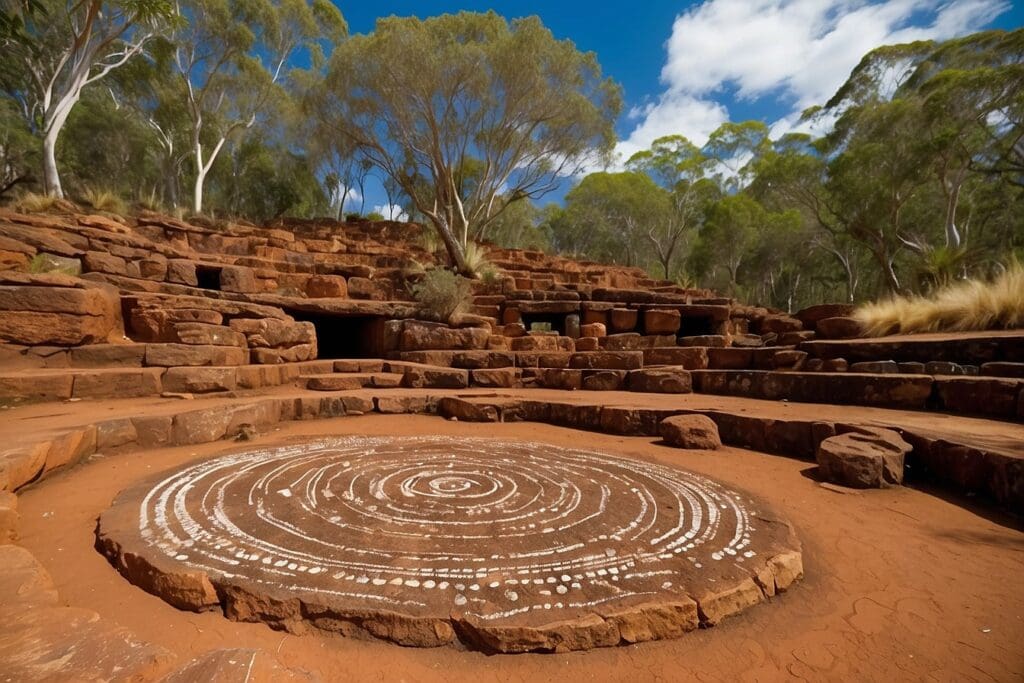
Ancestral spirits are believed to inhabit nature, maintaining a continuous and dynamic presence in the lives of Aboriginal people. These spirits are intertwined with elements of the earth, manifesting through aspects like animals, which may serve as totems for individuals or groups. Totems symbolise the responsibility to care for a particular aspect of the environment, thereby nurturing the bond between people and nature. This is visible in the Dreamtime stories, which are not simply myths or tales but are integral to the existence and governance of the land. These stories have been passed down through generations, with each narrative holding a deep reverence for the natural world.
Sacred Sites and Their Protection

Protecting Australia’s sacred sites is crucial to preserving Indigenous heritage and the cultural landscape. Legislation and traditional owners play pivotal roles in this conservation effort.
Legislation Guarding Sacred Sites
Legislation at both federal and state levels provides a framework for the protection of sacred sites within Australia. The Aboriginal and Torres Strait Islander Heritage Protection Act 1984 is a key federal law that allows the Australian Government to preserve places and objects significant to Indigenous people. Additionally, each state and territory has its own statutes and regulations, such as the Northern Territory’s Sacred Sites Act, which recognises and sanctions the autonomous rights of the traditional custodians over their sacred spaces. These laws are designed to safeguard not only the sacred sites themselves but also the intrinsic value they hold for biodiversity conservation.
The Role of Traditional Owners in Conservation
The traditional owners of the land, often referred to as the traditional custodians, have an inherent connection and responsibility to their heritage sites. Their input and leadership are vital in management and protection strategies. As the keepers of ancient knowledge, traditional owners guide conservation practices through collaboration with government bodies and advisory groups. Their role ensures that Indigenous heritage is not just conserved but also respected, allowing for the continued practice of cultural traditions that have survived for millennia.
Cultural Expressions of Dreaming
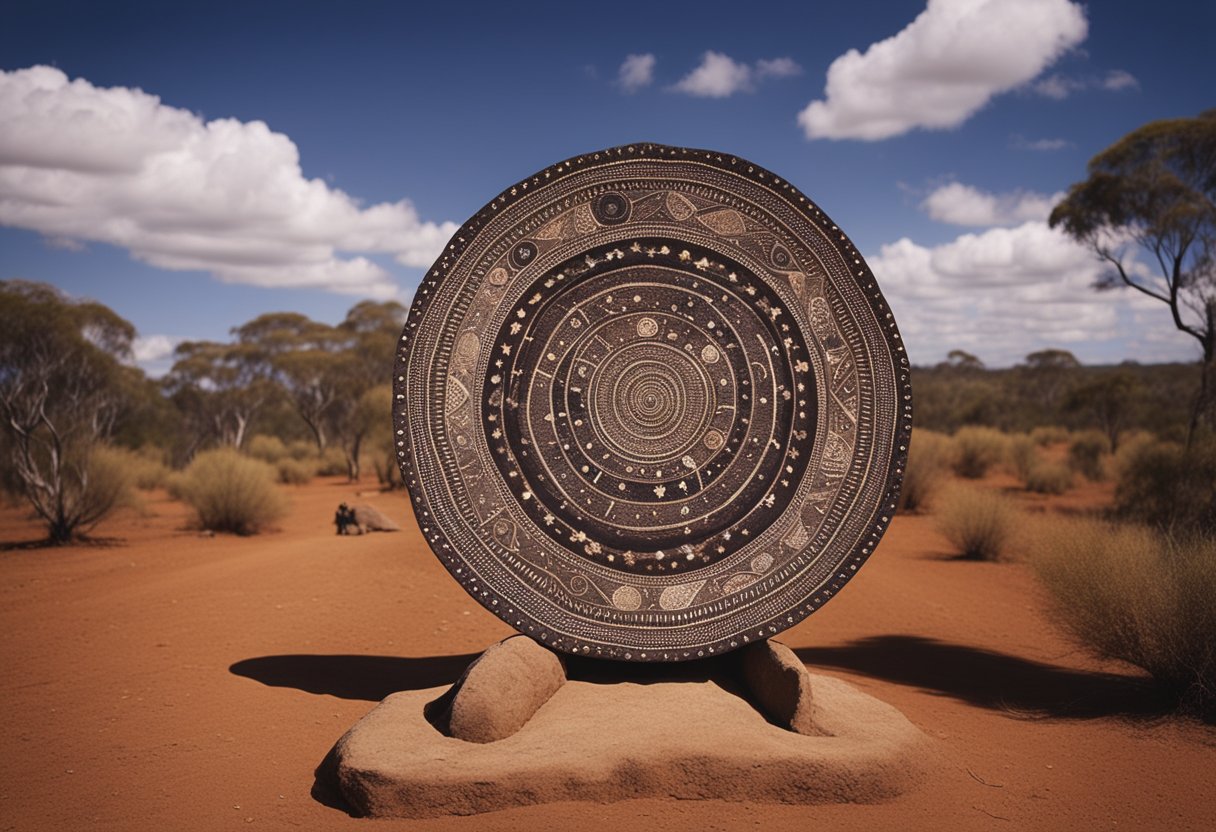
In our exploration of sacred Aboriginal sites in Australia, we find that Dreaming transcends mere myth; it manifests in meaningful cultural expressions that permeate everyday life.
Art Forms Depicting Dreamtime
Aboriginal art, rich in symbolism, acts as a crucial vessel for Dreamtime narratives. Through mediums like ochre paintings and intricate rock art, ancestral tales and laws are visually communicated. Ochre, naturally occurring and historically significant, serves as more than just a pigment; it is a link to the earth itself, a key element in portraying the spiritual. Hand-crafted didgeridoos, often decorated with Dreamtime motifs, not only deliver the haunting sounds of this ancient landscape but also, on occasion, narrate stories of Dreaming through their artistry.
Rituals and Ceremonies
Partaking in rituals and ceremonies provides us with a visceral connection to the Dreaming. Song and dance create a living tableau of the spiritual narratives passed down through countless generations. These performances are not simply for entertainment; each movement, each note, embodies the sacred lore, instructing and reinforcing social norms and rights to the land. Rituals, steeped in the vibrancy of the Dreaming, ensure that the connection to Country and ancestral beings remains unbroken and deeply felt within the community.
Transmission of Knowledge
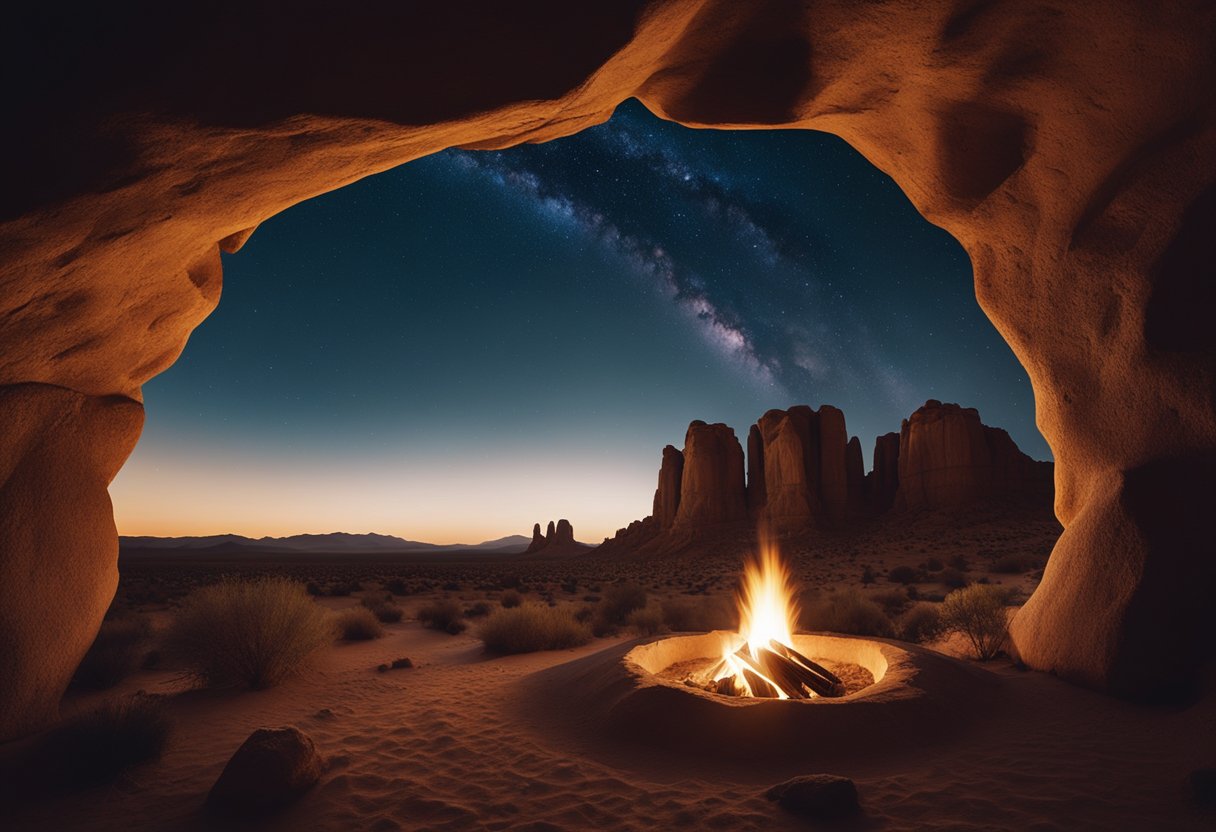
In the rich tapestry of Aboriginal culture, the transmission of knowledge is foundational, ensuring the continuity of law, kin relationships, and the land’s sacredness. Through time-honoured methods, we see the interweaving of storytelling, songlines, and Dreaming tracks as pivotal to Aboriginal heritage and education.
Storytelling and Oral Traditions
Storytelling is the lifeblood of Aboriginal knowledge transfer, serving not only to educate about law and kinship but also to maintain the sacred interconnectedness of community and the environment. These narratives, often recounted by elders, are not mere tales but serve as foundational lessons on how to interact with the natural world and each other.
Songlines and Dreaming Tracks
Songlines and Dreaming tracks are intricate networks spanning the Australian landscape, essentially acting as pathways that recount the ancestral spirits’ journeys during The Dreaming. By following these routes, Aboriginal people perform songs and dances that are rich in knowledge about their land, history, and relationships, preserving these vital aspects for generations.
Iconic Dreamtime Landscapes
The landscapes of Australia tell the stories of Dreamtime, where every formation is an echo of ancestral beings from the Aboriginal tales.
Uluru and its Cultural Significance
Uluru, also known as Ayers Rock, stands as a monumental icon of Australia’s natural heritage and holds deep cultural importance for Indigenous Australians. Sacred to the Anangu people, the traditional custodians of the region, Uluru resonates with Dreamtime tales and is an integral part of their spiritual identity. The monolith is a central figure in the creation stories and is located in the Uluru-Kata Tjuta National Park, which we recognise as a UNESCO World Heritage site. Visitors are encouraged to explore the cultural centre nearby to truly understand the significance that Uluru embodies.
Arnhem Land and Indigenous Artistry
In the remote reaches of Arnhem Land, we find a canvas of ancient artistry. This is a landscape rich with Indigenous heritage, where art is not just a form of expression but a means of passing down sacred stories and laws from generation to generation. The rock art, spanning thousands of years, offers insights into the complexities of spiritual life and the connection to land. Protecting these sacred places is a testament to the reverence that Indigenous Australians hold for their land and culture. Visitors exploring Arnhem Land will witness a living culture that continues to thrive in a modern world.
Ancient and Contemporary Aboriginal Art
Aboriginal art, a reflection of the rich cultural tapestry of Indigenous Australia, has a lineage that both honours ancient traditions and embraces contemporary expression.
Evolution of Aboriginal Rock Art
Our exploration uncovers that Aboriginal rock art is one of the oldest ongoing art traditions in the world. This art encompasses both petroglyphs—carvings into rock surfaces—and paintings. Northern Australia’s Kakadu National Park is home to Ubirr and Nourlangie Rock, where we find remarkable galleries. These storied canvases illustrate Aboriginal myths and the teachings of Dreamtime, with some artworks being over 20,000 years old. These ancient visuals give us invaluable insights into daily life, spiritual beliefs, and deep connection to the land held by the first Australians.
Contemporary Aboriginal Artists and Galleries
In contemporary times, Aboriginal artists continue to express their cultural heritage through art. Their work bridges the gap between an ancient past and a modern experience with pieces steeped in their ancestors’ symbols and storytelling techniques. Many contemporary Aboriginal artists like Rover Thomas and Emily Kame Kngwarreye have found international acclaim, and their artworks are displayed not only in galleries throughout Australia but also across the world.
The emergence of new artistic hubs, such as the remote Arnhem Land and urban centres, enables a multitude of voices and styles to flourish, contributing to the ever-evolving tapestry of Aboriginal Australia. These artists often use traditional materials and methods, like ochre painting and bark art, while also experimenting with contemporary mediums and techniques, ensuring the living traditions of Aboriginal art grow and adapt with the times.
Ecosystems within Aboriginal Lore
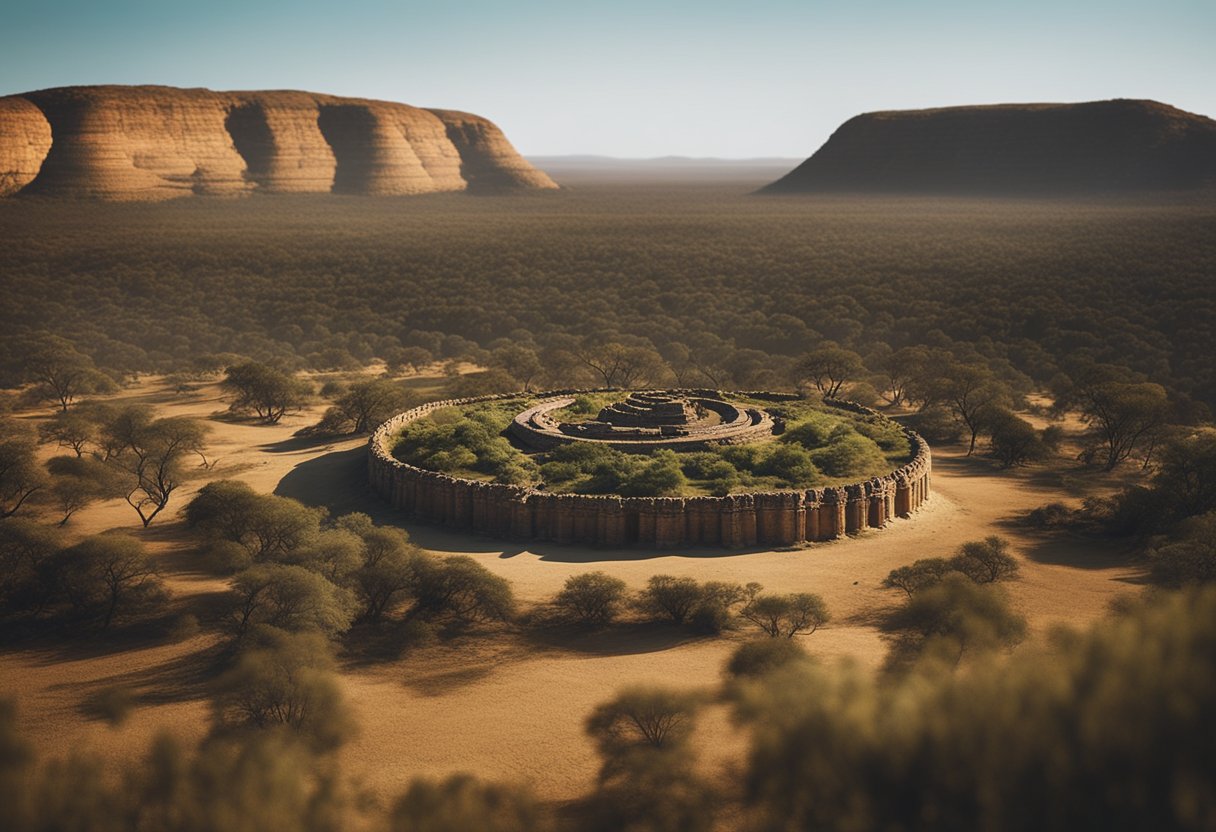
Aboriginal lore intertwines with the natural environment, finding deep meaning in the connection between all living things and the land itself. This lore comprises complex ecosystems that are represented and respected through Dreamtime stories.
Fauna and Flora in Dreamtime Stories
In Dreamtime stories, animals and plants are not merely components of the Australian landscape but integral characters with rich spiritual significance. These stories portray fauna and flora as ancestral beings whose actions during the Dreaming shaped the features of the earth, the distribution of species, and the laws governing ecological relationships. Specific species of animals and plants are often embodied as totemic figures, guiding human behaviour and nurturing a balanced ecosystem.
Dreamtime lore celebrates the existence of unique wildlife, from the kangaroo and the emu to the intricate patterns of plant life that cover the continent. Their existence within these stories underlines our collective responsibility to preserve their habitats and maintain the cycles that ensure their continuation.
Sacred Water Resources: Rivers and Lakes
Our reverence for water bodies is grounded in their importance within Aboriginal lore. Rivers and lakes are more than mere sources of sustenance; they are sacred sites where Dreamtime beings enacted transformative events. The stories of these places are passed down through generations, underscoring the shared understanding that water is the lifeblood of our ecosystems.
Not only do they connect us with the ancestral spirits, but they also serve as gathering spots that reinforce our kinship and custodial roles. The management of these water sources is informed by longstanding traditions that harmonise our use with the preservation of intricate ecosystems hosting diverse aquaculture. Our songs and stories associated with water reflect its cyclical journey and emphasize our profound respect for rivers and lakes as vital components of the land.
Living Traditions and Practices
In acknowledging the sacred Aboriginal sites of Australia, we explore the spectrum of living traditions and practices that are deeply interwoven with the cultural fabric of Indigenous society.
Modern Ceremonies and Cultural Practices
Aboriginal society preserves a profound spiritual connection with the land through vibrant traditions and customs that have been carried through millennia. Present-day ceremonies continue to reflect the underlying spirituality and cultural values intrinsic to Indigenous communities. Our collective awareness and respect for these traditions help to ensure their longevity.
Notable practices include:
- Participation in local festivals
- Revival of traditional dance and song
- Usage of ceremonial body painting to convey stories and lore
These activities are essential not only in sustaining the cultural heritage but also in educating younger generations and imparting the ancestral wisdom of the Dreamtime—a time beyond memory when ancestral spirits shaped the world and laid down the laws of existence.
Tourism and Cultural Experiences
The integration of tourism into traditional lands offers a unique opportunity for visitors to engage with the Indigenous cultures of Australia. By choosing experiences curated by the local Anangu community, tourists gain authentic insights into the rich tapestry of Indigenous life.
Tourism initiatives may include:
- Guided walks explaining the significance of sacred sites
- Cultural centres showcasing traditional arts and crafts
- Storytelling sessions detailing the profound connection between the Aboriginal people and their lands
Through these immersive experiences, we foster a mutual understanding and appreciation that benefits both visitors and the custodians of these timeless traditions. We encourage respectful participation in these tours, as they are vital in preserving the customs and spiritual heritage of Indigenous Australians.
Ethical Considerations and Access

When exploring the magnificent sacred Aboriginal sites of Australia, it is of utmost importance that we acknowledge their cultural significance and adhere to ethical practices. This ensures the preservation of these priceless landscapes and honours the traditional owners.
Visiting Sacred Sites Responsibly
Planning your visit: Prior to embarking on a journey to any Aboriginal sacred site, it is vital to engage in thorough planning. Understanding the cultural sensitivity and the protocols established by the traditional owners is a part of this process. For instance, some sites in Victoria or the Kimberley may require permits or a guide.
- Consult local communities: Always seek guidance from the Indigenous communities to navigate these cherished spaces. This usually involves liaising with local authorities or Indigenous rangers, who can offer insights into the dos and don’ts while accessing these areas.
- Respect the landmarks: While visiting landmarks within sacred sites, like the ancient rock formations of Kakadu or dramatic caves hidden within landscapes, it is imperative that we show the highest degree of respect by not interfering with the site in any way—this includes not removing stones, artefacts, or plants.
Collaborative Efforts in Site Preservation
Partnership with Indigenous communities: Preservation of these sacred sites is not just a job for the traditional owners but a collective responsibility. Collaborative efforts ensure that the balance between access for educational or spiritual reasons and the protection of these spots is maintained. This approach is crucial in places like Kimberley, where the landscape holds not just historical but ongoing cultural significance.
- Educational initiatives: Spreading awareness through educational programmes can aid in understanding the importance of these sites. By learning about the culture and history, visitors can appreciate the connectivity between the stories of Dreamtime and the physical presence of sacred sites.
By adhering to these guidelines, we support not only the conservation of Australia’s unique heritage but also the deep spiritual connection these landscapes hold for Indigenous Australians.
Frequently Asked Questions
In this section, we address some of the most common inquiries about the Aboriginal sacred sites of Australia, the significance of Dreamtime stories, and the customs surrounding these revered places.
How do Dreamtime stories shape the cultural landscape of Indigenous Australians?
Dreamtime stories are the bedrock of Indigenous Australian culture, illustrating how ancestral beings forged the natural world and its laws. These stories provide more than just explanations of the environment; they offer a framework for social norms and personal identity within Indigenous communities.
What are the protocols for visiting Aboriginal sacred sites?
When visiting Aboriginal sacred sites, it’s paramount to show respect and follow local guidelines. Visitors must obtain permission from traditional owners or custodians and adhere to restrictions, which might include not taking photographs or entering certain areas deemed as sacred.
Which landmarks are considered spiritually significant in Aboriginal culture?
Landmarks such as Uluru, the Bungle Bungle Range, and the Daintree Rainforest are deeply rooted in Aboriginal spirituality. Each holds its own Dreamtime narrative, highlighting its significance in the creation and law of the land, thus deserving reverence and protection.
Can you describe the role of art in Aboriginal creation myths?
In Aboriginal creation myths, art serves as a visual testament to the Dreamtime. It conveys the stories and lore through intricate patterns and symbols, offering a tangible connection to the narratives that sculpt the moral and societal fabric of Indigenous communities.
What are the consequences of disturbing Aboriginal sacred sites?
Disturbing Aboriginal sacred sites can have severe cultural consequences, including the loss of ancestral connections and the desecration of age-old customs. Legal repercussions may also arise under Australian legislation that aims to protect these sites.
How do Aboriginal people convey the importance of Dreamtime through their storytelling?
Aboriginal people utilise storytelling as a vital medium to impart the essence of Dreamtime. Through a rich oral tradition, anecdotes of ancestral feats and creation are meticulously passed down to keep the culture’s heartbeat alive for posterity.






